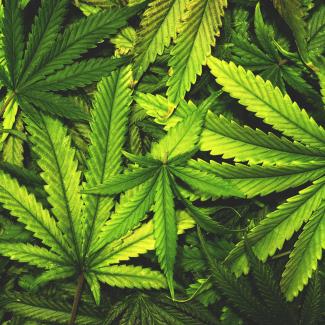In the United States alone, it is estimated that nearly 1 in 4 people have suffered from pain lasting more than 24 hours, or chronic pain, and millions more suffer with acute pain. In fact, according to the National Institutes of Health (National Institutes of Health, 2017), pain is the number one reason people access health care in America. Yet, one of the most common forms of treatment for pain is causing another epidemic all of its own.
In 1996, the same year Oxycontin was released, Dr. James Campbell, the president of the American Pain Society, urged doctors to pay more attention to each patient’s level of pain, and coined the phrase:
“Pain – The fifth vital sign (Nielson, 2016).” By 2015, there were more than 52,000 fatal overdoses in the United States, and over 20,000 of them were due to prescription pain killers. Earlier this month, a New York Times Journalist, Josh Katz reported,
Although the data is preliminary, the Times’s best estimate is that deaths rose 19 percent over the 52,404 recorded in 2015. And all evidence suggests the problem has continued to worsen in 2017.
The Truth in Opiates
At first glance, opioid medicines appear to do what they are intended with short term effects including euphoria, drowsiness, sedation, and most importantly, pain relief. However, because of the intense high created by the opiates, addiction to the drug can start in as little as 3 days. Long term use of opiates can cause a wide range of negative effects including,
- Nausea and Vomiting
- Bloating
- Constipation
- Liver damage
- Brain damage
- Tolerance (requiring more and more of the drug to achieve the same results)
- Death
As patients continue the use of opiates, higher doses or stronger drugs are often sought out as the body begins to build a tolerance and what once helped to block the pain receptors, no longer does. To fight this, drug makers are creating deadly synthetic opioids like Fentanyl, which is 80 to 100 times stronger than morphine. Fentanyl was most recently in the headlines for claiming the life of pop music legend, Prince.
Is Cannabis the Key?
Despite the current Schedule I status of marijuana limiting research on the plant in the United States, researchers from other countries are blazing a trail in cannabis research. Thanks to Dr. Mechoulam in Israel and his discovery of the Endocannabinoid System within the human body in 1992, we know the body produces cannabinoids very similar to those found in the plant. All together this system affects the brain, as well as, the immune and endocrine systems, and can help create homeostasis, or balance within the human body (Komorowski J, 2007). In fact, new studies are emerging rapidly showing cannabis and the cannabinoids it produces may be the answer to saving thousands of lives. Cannabis has many roles in treating chronic pain and none of them will result in a fatal overdose.
Cannabidiol, or CBD, is widely-used as an alternative treatment for pain and inflammation. Research on the effects of CBD (Prakash Nagarkatti, 2009) shows how it can help fight inflammation and reduce pain by reducing the pro-inflammatory chemicals released by the body, as well as, acting as a mild muscle relaxant. CBD also can help patients receive much needed sleep to assist the healing process, as well as, relieve anxiety caused by the injury or illness in the first place.
Although science is starting to catch up with medical cannabis, possibly the most compelling evidence comes from looking at the states which already allow consumption of the plant. States with medical marijuana see about 23% less hospitalizations (Reuters, 2017) due to opiates. In fact, a study published last August in the JAMA Internal Medicine (Marcus A. Bachhuber, 2014) shows that states with legal marijuana also had 25% less opiate-related overdoses.
Some states such as Ohio and Missouri (Hassan, 2017) have taken action to stop the opiate manufacturing companies by filing lawsuits over the amount of deaths their states have seen, and many more Attorney Generals (Kounang, 2017) have announced their investigation into the opioid manufacturers and their practices, as well. However, until the federal government changes its stance on medical cannabis, many will remain at risk.
In 2016, it was estimated that more than 62,000 deaths were caused by overdose, and the number is expected to continue to climb throughout 2017. With Florida being one of the states hit hardest by the opiate epidemic, it is encouraging that patients will finally have access to medical marijuana as an alternative to opiates to manage their pain. Opiate abuse and addiction is a complex problem that will persist in the U.S. for years to come, but with each step in the right direction, lives will be saved.
























